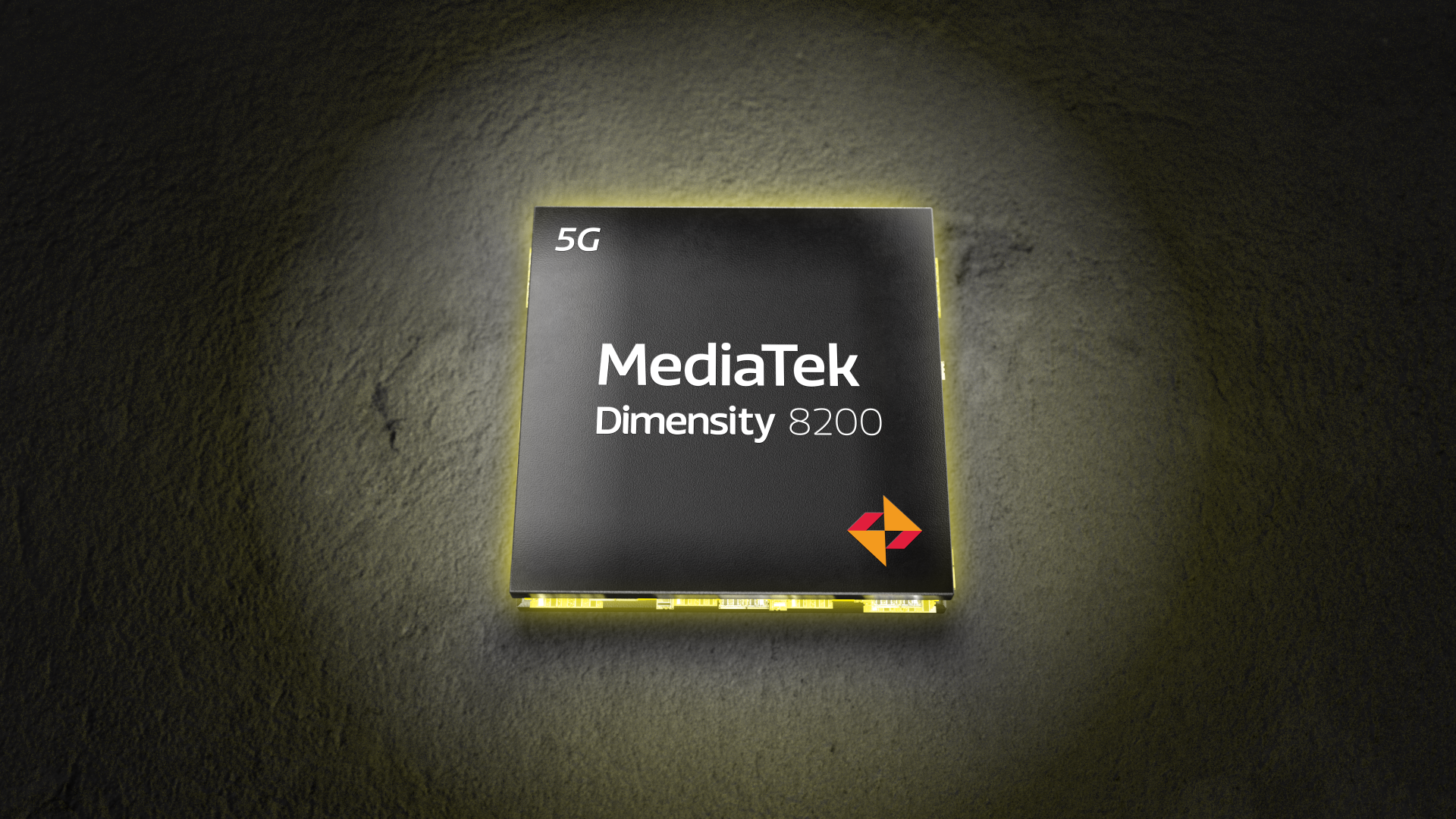MediaTek is once again out with a new mobile chipset — this one is intended to hit that sweet spot between the mid-range and premium price zones some Wall Street stiffs call "Premium B." The Dimensity 8200 follows in the steps of the Dimensity 9200 launched last month, but its bloodline clearly comes from the Dimensity 8000 and 8100 dual releases from back in March. For lack of a better term, you could call the 8200 a power play.
|
CPU |
1x Arm Cortex A78 @ 3.1GHz + 3x A78 @ 3GHz + 4x A55 @ 2GHz w/ 4MB L3 Cache |
|
GPU |
Arm Mali-G610 MC6 |
|
AI |
MediaTek APU 580 |
|
Camera |
Imagiq 785 (320MP single camera, 14-bit HDR, support for triple cameras, dual-exposure HDR video) |
|
Connectivity |
Wi-Fi 6E 2x2, Bluetooth 5.3, 3GPP R16 Modem (3CA 200MHz, sub-6GHz 5G) |
|
Memory |
LPDDR5 quad-channel, UFS 3.1 |
|
Display |
MiraVision 785 (180Hz @ 1080p+, 120Hz @ 1440p, 4K60 video capture, 4K AV1 decode) |
|
Node |
TSMC N4 (4nm) |
On improvements, top billing goes to the Dimensity 8200's move from TSMC's 5nm die down to 4nm, bringing in more transistors and a lot of extra performance. The blueprint, though, hasn't changed too much from the 8000 or 8100 with the same Cortex A78 and A55 designs from Arm in place. That said, those same eight cores are now split into not two, but three clusters: a single A78 running at 3.1GHz with three others topping out at 3GHz, tailed by the A55s at 2GHz.
Other additions include Bluetooth LE Audio and wireless stereo synchronous playback, a bump up from 2CC to 3CC aggregation, and boosts to the visual centers with support for HDR video capture using multiple exposures from different cameras plus a Vulkan SDK touted to make light work of ray tracing
The company didn't give a specific competitor analog like it did for the Dimensity 8000 and 8100 — the press stack we were given was fairly short and left little room to read between the lines.
Premium B phones seem to matter the most in certain regions like India where while there's less disposable income than in the top markets, there's also more striation overall. There's plenty of strategy and betting when it comes to the interplay of releasing Premium B products alongside others in the price rungs above and below them, but the general hope for them is to collect margins that would have otherwise been lost if a customer decided against a flagship and would have been keen on a mid-ranger from the same brand. That makes OEMs especially sensitive to bill of goods in this narrow category.
MediaTek seems to think it's got a good thing going to capture a lot of this space, at least better than what Qualcomm has done.

